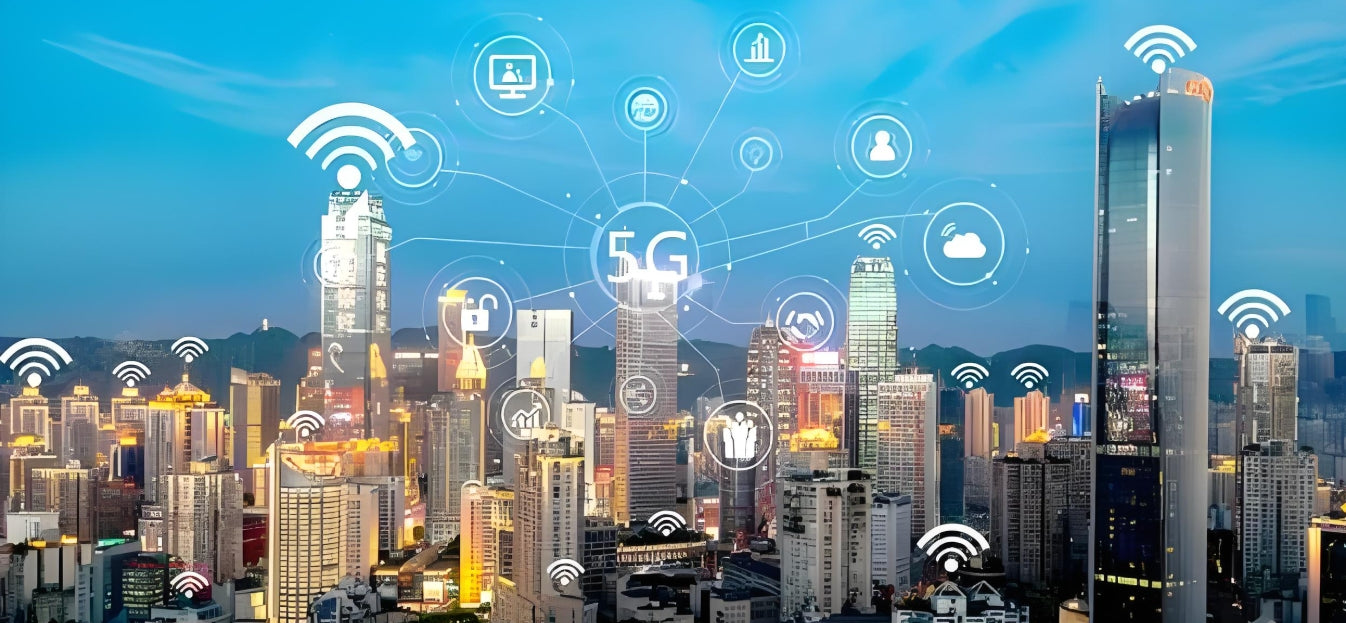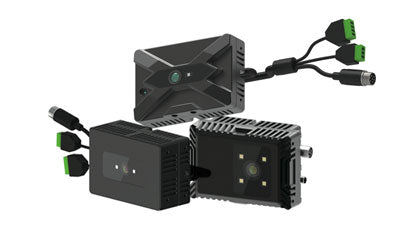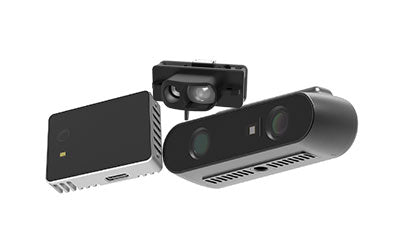TOF Perception Networks in Smart Cities:Building a Safer Digital Space

As cities advance toward digitalization and intelligence, 'perception' technology has become one of the fundamental capabilities in building smart urban infrastructure. Achieving efficient, real-time, and secure spatial awareness is now a major concern for urban managers and technology developers alike. Among the various solutions, TOF (Time-of-Flight)-based 3D sensing technology is rapidly being integrated into all facets of smart city development.
Spatial Perception Needs in Smart City Construction
The essence of a smart city lies not only in enabling the "Internet of Everything" but also in establishing a digitally perceivable environment. As urban spaces evolve toward intelligence and automation, the ability to perceive and accurately model space in real time has become a key capability for improving governance efficiency, public safety, and citizen experience. Traditional 2D imaging-based monitoring systems fall short in capturing multidimensional, complex urban scenarios, especially under low light, backlight, or occluded conditions.
To address these challenges, TOF perception networks have emerged as a technological cornerstone of the next-generation urban spatial sensing systems. Based on time-of-flight cameras, combined with high-performance 3D depth cameras and RGBD cameras (cameras that integrate RGB and depth sensing), urban management systems can accurately acquire frame-by-frame depth information and spatial structures under various lighting conditions, enabling robust 3D sensing and 3D vision inspection capabilities.
TOF systems measure the distance between the sensor and objects to generate millimeter-level precision depth maps. Combined with sensor TOF 3D modules, these networks can capture real-time changes in crowd density, traffic conditions, structural elements, and environmental obstacles. Whether in underground parking lots, subways, busy commercial areas, or complex structures like bridges and tunnels, TOF systems operate reliably and provide highly accurate data.
Furthermore, with building sensors strategically deployed in key areas, TOF networks can sense not only static structures but also dynamic changes—such as emergencies, moving targets, and fall detection—thus offering a 'visually tangible and dynamically aware' data foundation for urban applications. These capabilities strongly support smart security, urban operations, and digital twin technologies.
What is Urban Security?
Urban Security refers to a comprehensive set of safety measures designed to protect public safety, residents’ personal and property security, and the stable operation of critical infrastructure within a city. It encompasses multiple aspects, including physical security, information security, traffic safety, environmental monitoring, and emergency response.
In the context of smart cities, urban security is no longer limited to traditional manpower patrols and video surveillance. Instead, it increasingly relies on advanced technological tools to deliver more efficient and intelligent protection. Examples include:
-
TOF Cameras (Time-of-Flight) for 3D spatial sensing, which enhance intrusion detection even in low light or complex lighting environments.
-
Crowd Monitoring Systems that analyze real-time population density to prevent stampedes, congestion, and other safety hazards.
-
Smart Traffic Control using sensors, AI recognition, and edge computing to optimize traffic signals and issue early warnings of accidents.
-
Big Data and AI Algorithms to predict and respond rapidly to potential urban safety risks.
Urban Security is a core component of building safe, intelligent, and efficient urban environments, and it serves as the foundational safeguard for creating cities that are both livable and business-friendly.
Applications of TOF in Urban Security, Crowd Monitoring, and Traffic Detection
In the construction of smart cities, Time-of-Flight (TOF) cameras have become a critical pillar of spatial sensing systems. With their real-time, non-contact, and high-precision 3D perception capabilities, TOF technologies are proving irreplaceable in core areas such as urban security, crowd monitoring, and traffic detection.
1. Urban Security and Intrusion Detection: 3D Perception Builds a Secure Barrier
In modern smart city security systems, traditional cameras or infrared devices alone can no longer meet the demands for all-weather, multi-scenario, and high-precision intrusion detection. TOF cameras, as next-generation 3D sensing devices, are increasingly becoming the core sensing nodes for intelligent security systems in critical urban areas due to their real-time performance, precision, and resistance to interference.
By emitting near-infrared light and measuring its return time, TOF cameras can generate high-density, texture-independent 3D point clouds in milliseconds. This enables the system to accurately reconstruct the spatial structure of a surveillance scene and capture key spatial features such as object contours, height, and volume. Especially in sensitive areas like government buildings, law enforcement facilities, airports, metro stations, and energy hubs, TOF systems offer comprehensive and blind-spot-free 3D monitoring.
When integrated with AI algorithms, TOF systems utilize time-of-flight sensing to assess the size, behavior, and movement patterns of targets entering the monitored zone. The system can distinguish between 'humans,' 'animals,' and 'objects,' and recognize abnormal behaviors such as crawling, running, loitering, or climbing over fences, building behavioral models to effectively reduce false alarms and missed detections.
Compared to traditional cheap heat cameras, TOF offers significant advantages in complex environments:
-
Low-light / backlight conditions: TOF’s active illumination is independent of ambient lighting, ensuring high-accuracy depth maps even in dim tunnels or nighttime scenes.
-
Unaffected by temperature or color: It is immune to disturbances caused by body temperature or surface color, avoiding false alarms from pets, wind-blown objects, or lighting changes.
-
Real-time 3D imaging: Offers centimeter-level depth accuracy and 30–60 fps frame rates, making it ideal for fast-moving target detection.
-
Compact and low-power: TOF cameras are small, energy-efficient, and responsive, easily embedded in existing security systems, smart poles, and autonomous patrol units.
Moreover, when paired with edge AI devices, TOF systems can process data locally and respond immediately, avoiding delays caused by cloud transmission. Multi-point deployment enables multi-angle TOF networks, covering high-rise buildings, plazas, and exterior fence zones with full-range surveillance.
In residential communities, industrial parks, factory perimeters, and border defense lines, TOF solutions not only improve monitoring efficiency but also lay the technical foundation for future intelligent patrols, remote enforcement, and event playback in smart security systems.
2. Crowd Density Monitoring and Flow Management
In crowded areas such as shopping centers, transportation hubs, and event venues, TOF technology leverages time-of-flight sensors to generate real-time crowd distribution maps, produce dynamic heatmaps, and enable precise people counting and density tracking. The system can also detect walking direction and speed changes, helping anticipate congestion, abnormal gatherings, or emergency events.
TOF systems are not only accurate but also privacy-friendly. Unlike traditional RGB-based surveillance, TOF outputs depth maps without facial or color information, effectively preventing personal data leaks. Additionally, with integrated fall detection modules, TOF cameras can monitor elderly-prone areas like metro platforms or hospitals, immediately detecting and alerting for fall events, which is critical for emergency response.
3. Traffic Flow Monitoring and Anomaly Detection
Smart transportation is a vital part of smart cities. TOF-based 3D sensors and time-of-flight camera sensors deployed at key road intersections can monitor vehicle count, classify vehicle types (e.g., sedans, trucks, motorcycles), and measure traffic direction and speed in real time. By integrating RGBD cameras and 3D vision inspection, the system can identify license plate positions, inter-vehicle distances, and lane violations, providing robust data support for intelligent traffic management systems.
Compared to traditional LiDAR focusing systems, TOF solutions offer clear advantages in cost-efficiency, size, and power consumption, making them ideal for large-scale deployment and integration with edge computing nodes. When combined with shared control platforms, TOF-based traffic data can power smart traffic light control, peak-hour alerts, and infrastructure optimization for smarter urban traffic management.
Collaboration with Edge Computing and 5G Communication
In the vast data ecosystem of smart cities, the data generated by TOF sensing networks is massive and highly real-time, necessitating the deep integration of edge computing and 5G communication to build a city-scale intelligent perception infrastructure that is timely, robust, and scalable.
With edge computing nodes, yaml configuration files can be deployed to quickly adjust local algorithm strategies and device parameters, enabling multi-scenario adaptive operation. Edge nodes not only preprocess, denoise, and extract targets from the depth data collected by time-of-flight camera sensors, but also perform preliminary decision-making locally, significantly reducing computational pressure on central data centers and the bandwidth load on core networks.
Thanks to the ultra-low latency and high bandwidth transmission capabilities of 5G networks, massive data from TOF cameras, volume sensors, and sensor TOF 3D devices across the city can be uploaded to central platforms in milliseconds. This enables linkage with shared controls systems to realize cross-regional perception, analysis, and feedback loops.
In practical applications such as UAV (drone) inspections, city emergency patrols, and power grid maintenance, intelligent flying devices equipped with TOF camera sensors and drone obstacle avoidance systems can leverage real-time TOF sensing to enable dynamic route planning, automatic obstacle avoidance, and target tracking. Combined with 5G remote command systems and edge visual processing platforms, these gesture-controlled drones can be widely used in high-altitude surveillance, bridge crack inspection, fire early warning, geological disaster response, and other critical areas, greatly enhancing the intelligence and safety of urban operations.
Data Privacy and the Low-Intrusion Advantage of TOF
One of the most sensitive social concerns regarding public deployment of sensing devices is privacy protection. Traditional visible-light video surveillance captures personal features such as faces, body shapes, and clothing, raising user sensitivity and compliance risks. In contrast, time-of-flight sensing systems output depth information—i.e., distance data between objects and the camera—without involving color images, facial details, or other sensitive identity features, thus inherently avoiding privacy infringement.
Compared to RGB-D cameras, TOF devices output only coordinate point clouds or grayscale depth maps when generating 3D depth camera images, maintaining high precision even in extremely dark or bright environments. Since this data cannot be used for direct facial recognition, it is more easily accepted by society and regulators in terms of data compliance. Increasingly, governments and technical institutions are exploring what is time of flight sensing and its compliance advantages, marking TOF as the preferred privacy-friendly sensing technology for smart cities.
Moreover, TOF systems can perform region masking and target anonymization at the data acquisition stage. By combining distance sensor types and building sensors modules, the system can be configured to only collect basic geometric information or avoid collecting data in certain regions. This hardware-level privacy protection mechanism is far superior to traditional visual algorithms’ 'post-processing masking' and easier to comply with global data collection regulations.
As urban intelligence continues to advance, the characteristics of TOF technology—“low intrusion, secure control, and non-identifiable data”—will lay a solid foundation for its expanded application in public safety, smart commerce, transportation, healthcare, and other fields.
Urban Digital Twin and Real-Time TOF Modeling
The TOF sensing network not only enhances the intelligence of urban operations but also provides a solid data foundation for city-level digital twin systems. Using real-time 3D models generated by RGB-D cameras and time-of-flight camera sensors, cities can simulate physical events such as crowd movements, traffic flows, and building statuses within a virtual space to achieve visualized scheduling and intelligent prediction.
Together with devices like volume sensors, precise sensing of spatial capacity, indoor density, and parking lot utilization can be achieved, promoting optimal resource allocation in the city.
Conclusion
TOF sensing networks are leading smart cities from merely 'seeing' to truly 'understanding.' By integrating time of flight TOF sensors, edge computing, 5G communication, and data privacy protection technologies, they not only improve urban operational efficiency and safety but also lay the groundwork for efficient governance and green development of future cities. As the cost of TOF sensors continues to decrease and their application ecosystems expand, we have every reason to believe that TOF will play an increasingly crucial role in smart city construction worldwide.
Synexens Industrial Outdoor 4m TOF Sensor Depth 3D Camera Rangefinder_CS40p
After-sales Support:
Our professional technical team specializing in 3D camera ranging is ready to assist you at any time. Whether you encounter any issues with your TOF camera after purchase or need clarification on TOF technology, feel free to contact us anytime. We are committed to providing high-quality technical after-sales service and user experience, ensuring your peace of mind in both shopping and using our products.






